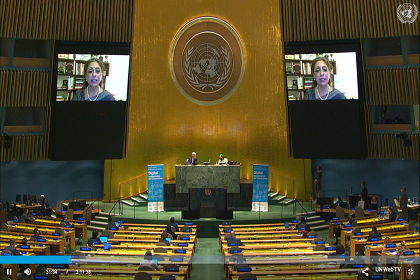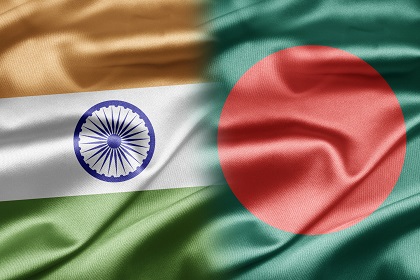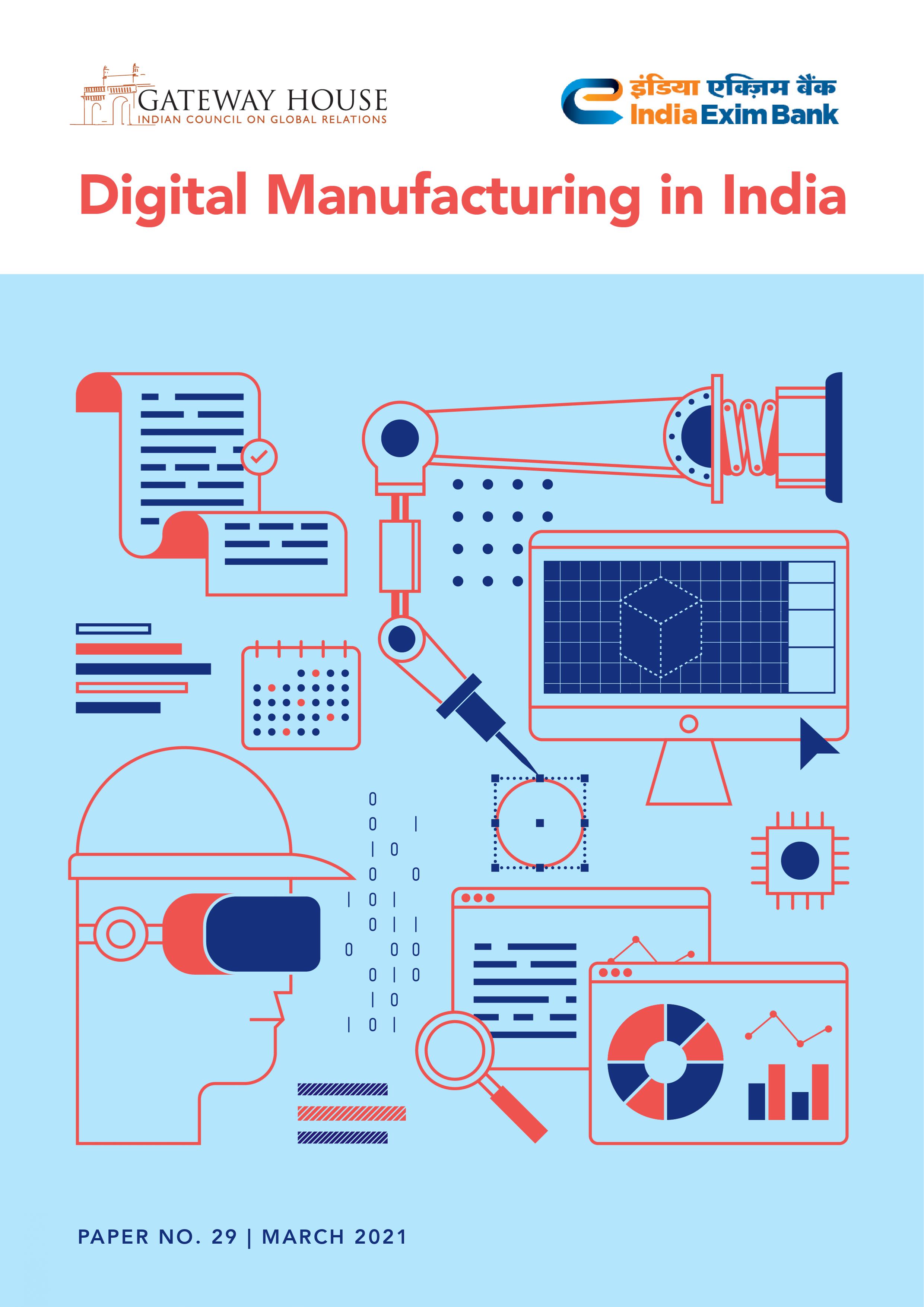 Courtesy: LinkedIn | Drishti
Courtesy: LinkedIn | Drishti
Using computer vision and AI to capture factory-wide data of human operators, Drishti Technologies co-relates human actions to line efficiencies, bottlenecks and root-cause analysis. Indian manufacturers operating at the lower end of the automation curve can use this combination to improve productivity, safety and quality by a deep-dive into human-action analytics.
 Courtesy: C4i4
Courtesy: C4i4
C4i4 is a part of the Government of India's Samarth Udyog initiative, and aims to hand-hold micro, small and medium enterprises (MSMEs) in the journey towards digitisation. Though MSMEs account for 45% of manufacturing output and 40% of exports, almost 90% of them lack access to markets beyond their limited geography. C4i4 helps them scale productivity and quality, and compete in global markets.
 Courtesy: United Nations TV
Courtesy: United Nations TV
On 27th April, the President of the UN General Assembly convened a one-day High-Level Thematic Debate on Digital Cooperation and Connectivity, bringing together the international community to commit to a common digital future for all and leave no one offline – especially in the context of the COVID-19 pandemic. Manjeet Kripalani, Executive Director of Gateway House, was invited to deliver the Keynote Address in the Opening Plenary session, held virtually in the UN Assembly Hall. Her speech on digitalization as a public good, is below.
 Courtesy: Twitter|@SiemensIndia
Courtesy: Twitter|@SiemensIndia
The 50-year-old Siemens facility in Kalwa adopted the Internet of Things, cloud and digital twin technologies to transform itself digitally and optimise manufacturing processes. It led to a 20% increase in productivity, and has made its product competitive with its German counterpart.
 Courtesy: Piramal Glass
Courtesy: Piramal Glass
In Dec 2020, U.S. private equity firm Blackstone acquired a controlling stake in Piramal Glass, in recognition of its inherent business value and accelerated digital journey. The plant in Kosamba, Gujarat, is an export powerhouse which has adopted digital technologies like IoT and cloud, and is a lodestar for brownfield facilities looking to become globally competitive, data-driven, and Industry-4.0 enabled. Early digital innovation helped restore plant-wide operations within a week of the COVID-19 pandemic, whilst adhering to stringent regulatory norms and workforce restrictions.
 Courtesy: Shutterstock
Courtesy: Shutterstock
This month marks the beginning of triple celebrations in Bangladesh, including the 50th anniversary of its independence, for which Prime Minister Modi will be traveling to Dhaka as the guest of honour. There is much to celebrate: A country that began as a case study for development is now on top of the global GDP charts. The springboard was achieved through a thriving textiles industry, women's workforce participation, micro finance, liberal investment policies. There is much to learn from this neighbour.
 Courtesy: Gateway House
Courtesy: Gateway House
Digital manufacturing is the next wave of business globalisation, which, post-pandemic is not just blind automation to save costs but the smart use of digital tools to modernise industry and create good quality jobs. Digital manufacturing is the next leap for India’s tech leadership - the first being the software outsourcing movement in the 1990s. This time around, government incentives are aligning with industry interests. It offers India a chance to reposition itself globally, and play a leadership role.
 Courtesy: Shutterstock
Courtesy: Shutterstock
COVID-19 has forced India and its manufacturers to quickly step up their adoption of digital manufacturing processes. There are four elements of this ecosystem already in place – the digital infrastructure, government schemes, academic learning, and a burst of start-ups. This, supported by key policy decisions by the Indian government, will propel Indian manufacturing to higher levels of efficiency, productivity, and competitiveness.
 Courtesy: Shutterstock
Courtesy: Shutterstock
Canadian Prime Minister Justin Trudeau's controversial wading into the Punjab farmers' protests has obfuscated the hard work done by diplomats and think tanks on both sides over the past three years, to boost the bilateral. India and Canada have much to gain from each other's strengths in technology, natural resources and investment, and even more if they collaborate internationally to develop an alternative to the current bipolar world order
 Courtesy: Press Information Bureau
Courtesy: Press Information Bureau
In the past five months, India has seen great change: ambitious economic reforms, billions in U.S. digital investments and a determined military and digital push back against China. India is now using the strategic and market weight of its 1.3 billion population and openly taking geopolitical sides to achieve its desired positioning, namely, to be a reliable partner in a more equitable global supply chain of virtual, physical and geopolitical elements.












